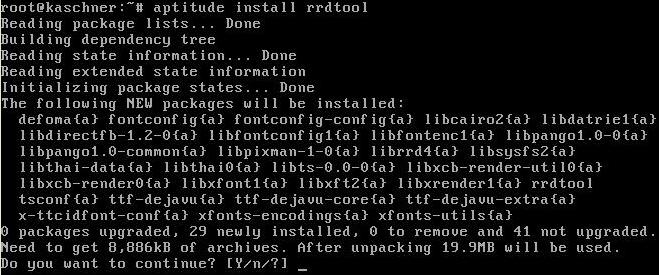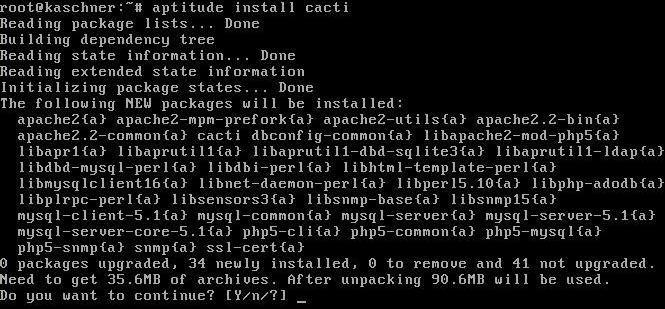Cacti: Difference between revisions
Jump to navigation
Jump to search
No edit summary |
|||
| Line 6: | Line 6: | ||
*Step 1. You will need to install three dependicies for cacti you will need RRdTool, Apache2, MySQL with apt-get or aptitude. | *Step 1. You will need to install three dependicies for cacti you will need RRdTool, Apache2, MySQL with apt-get or aptitude. | ||
[[File:Install_rrdtool.JPG]] | [[File:Install_rrdtool.JPG]] | ||
* | [[File:installrrd.JPG]] | ||
*Step 2. Install Cacti using apt-get or aptitude. | |||
[[File:icacti2.JPG]] | |||
*Step 3. Go into the Apache2 folder and change the configuration file /etc/apache2/apache.conf with nano or any text editor. At the end of the file add the line: Include /etc/cacti/apache.conf | |||
Revision as of 19:21, 22 February 2010
Cacti
Cacti is graphical representation of network traffic over a device. It can be used to monitor network traffic over individual ports to altogether usage. It can be installed in the windows enviroment or you may install it on a Unix-Linux based OS.
Installation
For this installation we will be installing cacti on a Ubuntu virtual box system.
- Step 1. You will need to install three dependicies for cacti you will need RRdTool, Apache2, MySQL with apt-get or aptitude.
- Step 2. Install Cacti using apt-get or aptitude.
- Step 3. Go into the Apache2 folder and change the configuration file /etc/apache2/apache.conf with nano or any text editor. At the end of the file add the line: Include /etc/cacti/apache.conf


